A look at Windows 8 Tablets running on TI, Qualcomm, Nvidia, AMD and Intel silicon
by Brian Klug on September 14, 2011 9:00 PM ESTThis afternoon (and yesterday) we had a chance to meet with a number of SoC vendors who have partnered with Microsoft for Windows 8. Each of them has their own individual reference tablet running Windows 8, and today we had a chance to survey the landscape and get photos of all the tablets. We started with ARM, then looked at x86 based tablets. Of course, the real goal with Windows 8 is to abstract as much of the difference between these two platforms away.
Unfortunately, all of the ARM vendors were required to keep their tablets under glass and out of the way of physical contact per Microsoft instruction. Microsoft isn't ready to show off the ARM version of Windows 8 for a variety of reasons at this point (at least without a Microsoft rep. present), but we still got a chance to at least take a look at what there is now. Microsoft is encouraging tablet makers to target either a 10.1" or 11.6" form factor with 1366x768 resolution (ed: Metro will require 1024x768 as a minimum, so 1280x720 displays don't meet Microsoft's requirements).
Texas Instruments
First up is TI, whose development platform was demoed playing back the 1080p30 H.264 baseline video shown in the keynote fluidly in windows media player with a split-screen view. One tablet displayed the start menu, another displayed two split screen games. TI's development platform as shown right now is running on OMAP 4430, which again consists of two ARM Cortex A9s at 1.0 GHz and PowerVR SGX 540 graphics. Windows 8 won't launch on OMAP 4430, however, instead it'll launch on the more powerful OMAP 4470 platform with PowerVR SGX544 graphics and a 2D display compositor. The reason is partly due to SGX544 having full Direct3D 9.3 compliance, partly because it's an all around faster platform. I'm told that right now there's some Direct3D emulation going on as well for all the SoCs that don't support Direct3D 9.3.
I also recorded a short video showing the TI Windows 8 tablet in action.
Qualcomm
My next stop was Qualcomm, whose current development tablet runs on an MSM8660 SoC, which consists of two scorpion cores and Adreno 220 graphics. Qualcomm took the tablet out of the glass box for us and showed a quick demonstration of the start menu scrolling back and forth, and the IE10 mobile view working and scrolling around.
Unfortunately we weren't allowed to shoot video of the tablet while that demo was running, but we did grab some photos of the tablet without the glass box. Performance on the start menu looked to be above 30fps the whole time but not buttery smooth like the x86 tablets we've seen so far.
Just like TI, Qualcomm won't go to market with the SoC they're demonstrating Windows 8 working on today, instead they'll use the more powerful dual core Krait MSM8960 at first and quad core Krait APQ8064 later on. Dual core krait SoCs (eg 8960, 8270, 8260A) come with Adreno 225, quad core krait (APQ8064 and others) come with Adreno 320, both of which are Direct3D 9.3.
NVIDIA
We've seen NVIDIA's Kal-El quad-core A9 based tablet a few times now, and found it out on the floor, also behind glass. Unlike the other vendors, NVIDIA hasn't said anything about going to market for Windows 8 with anything but Kal-El, and I don't see any reason why they should either.
The Kal-El development tablet was seated in a nice looking dock with what looks like one USB 3.0 port and a full size HDMI port.
AMD
Switching over to the x86 camp, we have AMD, who showed us two tablets running on Brazos - the Acer Iconia Tab W500 and MSI WindPad 110W, which use a C-50 and Z-01 APU, respectively. Displays on these are 1280x800 and support capacitive touch just like you'd expect for Windows 8.
Both the MSI WindPad and Iconia Tab felt snappy and responsive running the same Windows 8 Developer Preview build that we've used on the Samsung developer hardware. Subjectively, the WindPad's capacitive panel was more responsive and less prone to errant touch recognition than the Iconia, though both were more than useable with Windows 8.
Intel
Last but not least is Intel's own development tablet, which is running an unnamed 32nm SoC. Intel was suspiciously silent about which particular SoC was inside this device, and you'll notice that it too is locked down in a plastic box, lumping it squarely in the next-gen SoC category for Microsoft.
It's possible this is Medfield, it's also possible this is some 2nd gen 32nm Atom SoC. Hopefully we'll find out more as Windows 8 starts getting closer to launch.


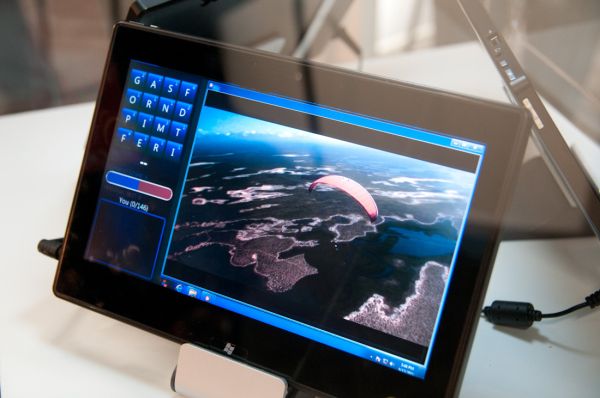
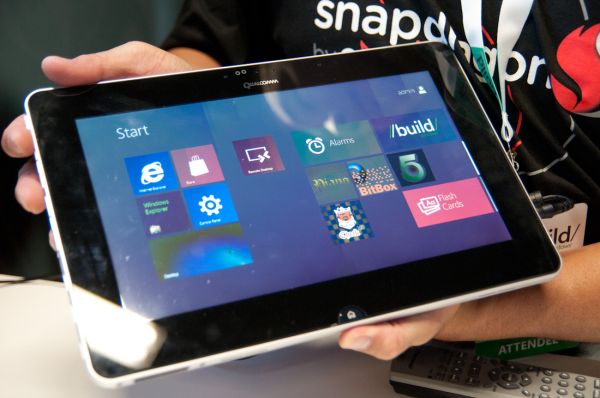
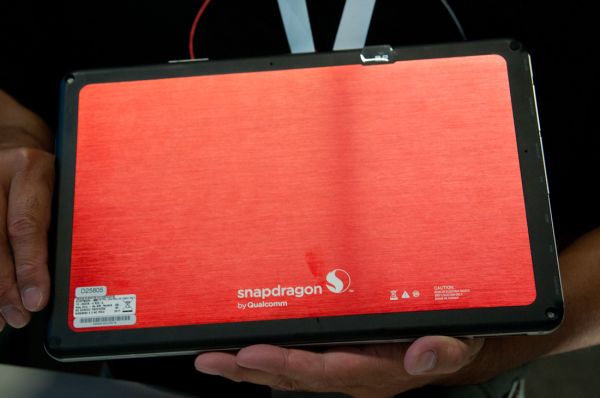
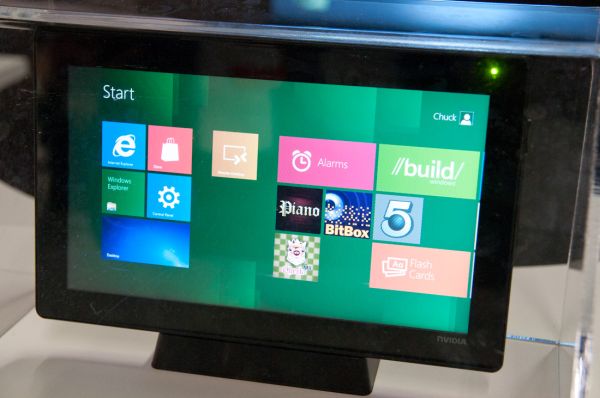
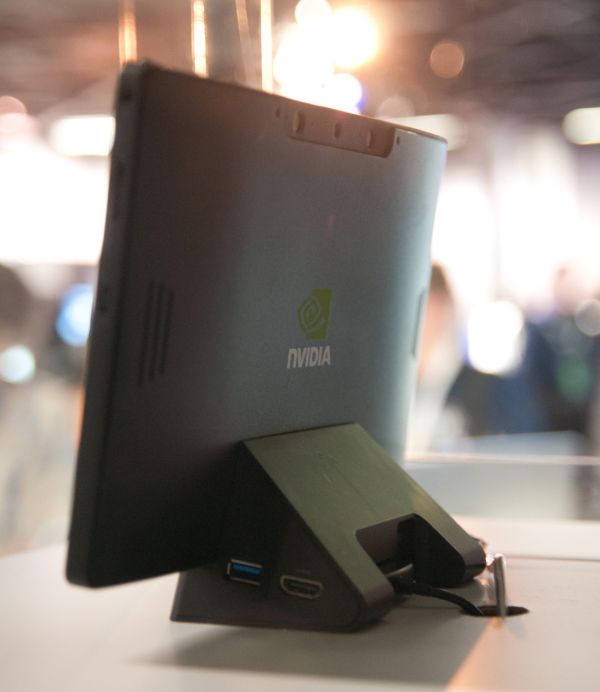
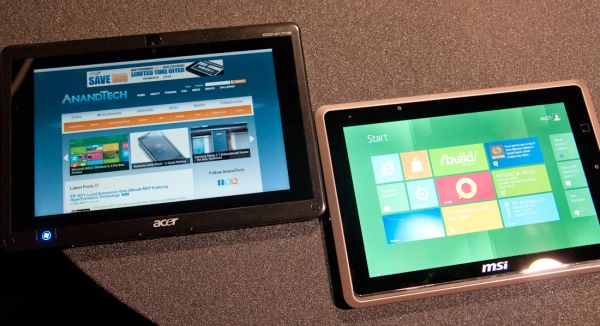
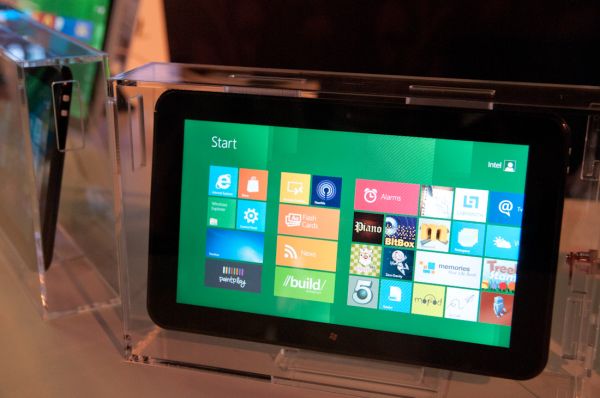














92 Comments
View All Comments
damianrobertjones - Thursday, September 15, 2011 - link
But people would prefer to go on second hand information :)I loved it when the iPad first hit and EVERYONE had something to say about Windows 7 (On tablets) yet next to no-one had actually used a product...
UrQuan3 - Thursday, September 15, 2011 - link
One thing I would love to see, but I know it would be a small market, would be a tablet of this sort with a pressure sensitive stylus in addition to the capacitive input. It would also need to be a sRGB or better screen. aka Cintiq without needing a seperate computer.Of course, the only market for this is artists and 3D modelers. There's only be a few thousand interested and fewer that could afford it. Most people do not want to have to keep up with a stylus.
pavlindrom - Friday, September 16, 2011 - link
They have demoed on Wednesday a device with both capacitive and resistive input sensors, so a finger wouldn't draw in an app while a pen would. Very intriguing stuff.Penti - Friday, September 16, 2011 - link
Dual capacitive and active digitizers is nothing new, Wacom pen compatible, Tablet PCs have had them for years. So does the Samsung demo unit they gave away 5000 of. They where around even before the iPad was showed. Nothing new there and Windows 8 just messes up with metro in that regard.FunBunny2 - Thursday, September 15, 2011 - link
For those who've developed (or even been users of) warehouse software, tablet apps are very old hat. Very 1990, in fact. The problem for M$ is that its stable of apps for Windoze assumes a desktop environment. To some extent, that's true of even new apps; the insistence on soft keyboards is the tell. A tablet specific UI *requires* a tablet intelligent datastore. Most coders still treat data as records on tape, with keyed input.A successful tablet OS/UI/app will work with pick-n-touch as the *only* interface. That means relational data back on the server, decomposed into orthogonal chunks, served up as needed. M$ doesn't have a clue.
tommo123 - Thursday, September 15, 2011 - link
what about intel powered? i want a windows tablet but with the ability to run current programs.Belard - Thursday, September 15, 2011 - link
They showed that on this article and in recent other ones... Did you not read the article?They showed AMD and intel tablets running x86.
Lord Moldy butt - Thursday, September 15, 2011 - link
Yeah, no kidding. Anand had this to say......http://www.anandtech.com/show/3696/intel-unveils-m...Zingam - Thursday, September 15, 2011 - link
I've downloaded the Developer preview version of Windows 8 and I have tried it. All I can say is that it is shit. It's unbelievable mess - half-desktop-half-touchscreen UI!!!I really wonder what MS is going to put on the shelves at the en. The current state is just a horrible mess. IT appears to me that MS doesn't know what they are doing.
Windows has always had a horribly designed UI and if they add these touchscreen elements it will become the utter crap!
extremepcs - Thursday, September 15, 2011 - link
Metro was not meant for the PC (at least one where a touch screen is not in use, like on POS systems). It's easy to turn off and then Win 8 looks almost identical to Win 7. The ribbon interface in Explorer is really the only major difference I have noticed so far.